-
 Bitcoin
Bitcoin $107,352.1067
0.28% -
 Ethereum
Ethereum $2,429.3531
-0.90% -
 Tether USDt
Tether USDt $1.0001
-0.02% -
 XRP
XRP $2.1894
4.62% -
 BNB
BNB $646.7968
0.36% -
 Solana
Solana $147.4290
4.03% -
 USDC
USDC $0.9998
-0.02% -
 TRON
TRON $0.2756
1.52% -
 Dogecoin
Dogecoin $0.1630
1.14% -
 Cardano
Cardano $0.5612
1.18% -
 Hyperliquid
Hyperliquid $37.0580
-0.05% -
 Bitcoin Cash
Bitcoin Cash $496.9410
-0.09% -
 Sui
Sui $2.7318
3.19% -
 Chainlink
Chainlink $13.1503
0.58% -
 UNUS SED LEO
UNUS SED LEO $9.0766
0.55% -
 Avalanche
Avalanche $17.7220
1.46% -
 Stellar
Stellar $0.2380
1.52% -
 Toncoin
Toncoin $2.8439
0.38% -
 Shiba Inu
Shiba Inu $0.0...01143
1.84% -
 Litecoin
Litecoin $85.8053
1.47% -
 Hedera
Hedera $0.1483
2.70% -
 Monero
Monero $314.3240
2.12% -
 Bitget Token
Bitget Token $4.6725
0.77% -
 Dai
Dai $1.0000
0.00% -
 Polkadot
Polkadot $3.3555
1.28% -
 Ethena USDe
Ethena USDe $1.0001
0.02% -
 Uniswap
Uniswap $7.0890
2.64% -
 Pi
Pi $0.5355
-3.40% -
 Pepe
Pepe $0.0...09393
1.06% -
 Aave
Aave $256.8136
-1.90%
Is it necessary to stop loss when the lower track of the rising channel falls below?
A breakdown below the rising channel's lower support may signal weakening momentum, but confirming with volume and other indicators is key before setting a stop loss.
Jun 28, 2025 at 05:29 pm
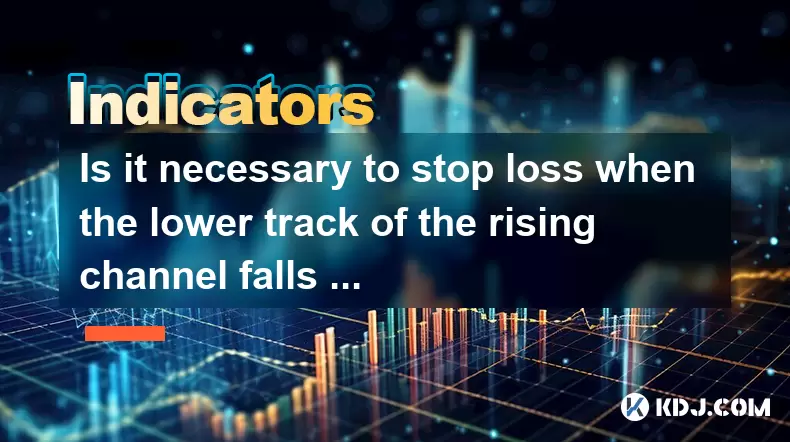
Understanding the Rising Channel Pattern
The rising channel pattern is a popular technical analysis tool used by traders to identify potential upward trends in asset prices. It consists of two parallel lines: an upper resistance line and a lower support line, both sloping upwards. The price action typically oscillates between these boundaries, offering opportunities for traders to enter long positions near the lower boundary and exit near the upper one.
When analyzing this structure, many traders focus on how the price interacts with the lower track of the rising channel. If the price begins to fall below this level, it may signal weakening momentum or a possible reversal of the trend. This raises a crucial question: should traders implement a stop loss when such a breakdown occurs?
Important Note:
Before making any decision, it’s essential to assess the context of the breakdown. Is it a false break? Is there high volume confirming the move? These factors influence whether a stop loss is truly necessary.What Happens When Price Falls Below the Lower Track?
A drop below the lower support line of a rising channel can be interpreted in multiple ways depending on market conditions. In some cases, it may only be a temporary pullback that doesn’t invalidate the overall uptrend. However, if the price continues to fall and remains below the channel for a sustained period, especially with increased volume, it could indicate a shift in sentiment.
Traders must distinguish between:
- Temporary retracement
- False breakout
- Trend reversal
If the breakdown is confirmed, continuing to hold a position without a stop loss exposes the trader to potentially significant losses. That said, placing a stop loss too close to the lower boundary might result in being stopped out prematurely during normal price fluctuations.
Key Insight:
Consider using additional indicators like volume, moving averages, or RSI to confirm whether the breakdown is meaningful before deciding to place or adjust a stop loss.How to Determine Whether a Stop Loss Is Necessary
Deciding whether to set a stop loss involves evaluating several key criteria:
- Volume confirmation: A valid breakdown often comes with a spike in trading volume. If the price breaks below the lower track but volume remains low, it may not be a strong signal.
- Price behavior after the break: Does the price quickly return inside the channel? Or does it continue to push lower?
- Timeframe consideration: Short-term breakdowns on intraday charts may not carry as much weight as those on daily or weekly charts.
- Support levels beyond the channel: Are there other layers of support below the channel that could absorb the selling pressure?
These observations help determine whether the breakdown is noise or a genuine warning sign. Traders who ignore these clues risk either exiting too early or holding too long without protection.
Critical Tip:
Use multi-timeframe analysis to validate the strength of the breakdown and decide whether a stop loss should be placed.Setting a Stop Loss: Practical Steps
If you’ve decided that a stop loss is appropriate, follow these steps carefully:
- Identify the breakdown point: Mark where the price closed below the lower boundary of the rising channel.
- Measure the distance from your entry: Evaluate how far your current position is from the breakdown zone to avoid overly tight stops.
- Place the stop just below the breakdown level: Allow room for minor volatility but not so wide that it increases risk significantly.
- Use trailing stops for existing gains: If the trade has moved favorably, consider locking in profits while allowing for further upside.
- Combine with other tools: Overlay Fibonacci extensions or volatility-based indicators (like Bollinger Bands) to fine-tune your stop placement.
Crucial Detail:
Avoid setting mechanical stops based solely on chart patterns without considering broader market dynamics.Alternatives to Immediate Stop Loss Execution
In certain situations, rather than immediately placing a stop loss, traders might opt for alternative strategies:
- Partial exits: Sell a portion of the position to reduce exposure while keeping the rest open in case the trend resumes.
- Wait for re-entry signals: Monitor for signs of trend resumption, such as bullish candlestick patterns or positive divergence on momentum indicators.
- Reassess the channel structure: Sometimes, the original rising channel evolves into a new formation—such as a consolidation phase or a wider channel—which may still offer trading opportunities.
These approaches allow traders to maintain flexibility and avoid knee-jerk reactions to short-term breakdowns.
Important Caution:
Alternative strategies require discipline and clear rules to prevent emotional decision-making.Frequently Asked Questions
Q: Can I rely solely on the rising channel for stop loss decisions?
No, the rising channel should be used in conjunction with other technical tools such as volume, moving averages, or momentum indicators to make informed decisions.
Q: How far below the lower track should I place my stop loss?
Ideally, place the stop loss slightly below the breakdown point to account for volatility, but ensure it aligns with your risk management strategy and overall trade setup.
Q: What if the price briefly dips below the lower track but then rises again?
This may indicate a false breakdown. Wait for confirmation—such as a close below the line and higher volume—before adjusting your stop loss.
Q: Should I use a fixed percentage stop loss or a dynamic one based on the channel?
Dynamic stop loss techniques, which adapt to price movement and channel boundaries, are generally more effective than rigid percentage-based stops in trending environments.
Disclaimer:info@kdj.com
The information provided is not trading advice. kdj.com does not assume any responsibility for any investments made based on the information provided in this article. Cryptocurrencies are highly volatile and it is highly recommended that you invest with caution after thorough research!
If you believe that the content used on this website infringes your copyright, please contact us immediately (info@kdj.com) and we will delete it promptly.
- Altcoins, Explosive Gains, and Cryptocurrency: What's the Hype?
- 2025-06-28 21:12:19
- SEI Mirroring Solana: Price Spikes and the Next Big Crypto?
- 2025-06-28 20:52:13
- Pi Network's Pi2Day: Token Tank and Disappointing Rollout?
- 2025-06-28 21:27:13
- PENGU Price Surges: Are Whales Targeting $0.0149?
- 2025-06-28 20:30:12
- Bitcoin Adoption, Portfolio Allocation, and Financial Advisors: A New Era
- 2025-06-28 21:27:13
- Kaanch vs. XRP: Spotting the Next Big Thing & Entry Price Opportunities
- 2025-06-28 21:50:12
Related knowledge
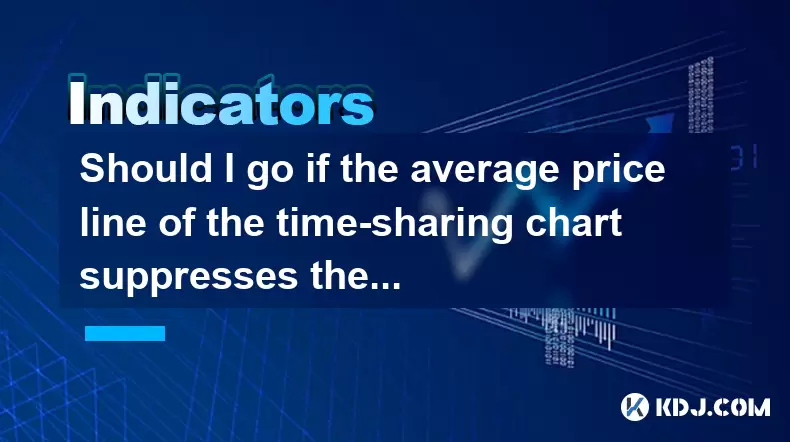
Should I go if the average price line of the time-sharing chart suppresses the rebound?
Jun 28,2025 at 05:14pm
Understanding the Time-Sharing Chart and Average Price LineThe time-sharing chart is a real-time chart used in cryptocurrency trading to visualize price movements over short intervals, typically within a single trading day. It provides traders with insights into intraday volatility and momentum. The average price line, often calculated as a moving avera...
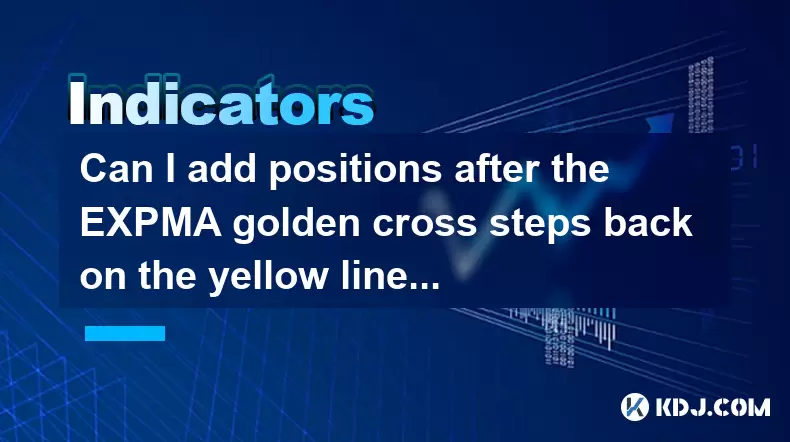
Can I add positions after the EXPMA golden cross steps back on the yellow line?
Jun 28,2025 at 11:57am
Understanding the EXPMA Indicator and Its RelevanceThe EXPMA (Exponential Moving Average) is a technical analysis tool used by traders to identify trends and potential entry or exit points in financial markets, including cryptocurrency trading. Unlike simple moving averages, EXPMA gives more weight to recent price data, making it more responsive to new ...

How to operate the next day after the daily limit is released with huge volume?
Jun 28,2025 at 12:35pm
Understanding the Daily Limit and Its ReleaseIn cryptocurrency trading, daily limits are often set by exchanges to manage volatility or during periods of high market activity. These limits can restrict how much an asset's price can fluctuate within a 24-hour period. When the daily limit is released, it typically means that the price cap has been lifted,...

Is it necessary to stop loss when the lower track of the rising channel falls below?
Jun 28,2025 at 05:29pm
Understanding the Rising Channel PatternThe rising channel pattern is a popular technical analysis tool used by traders to identify potential upward trends in asset prices. It consists of two parallel lines: an upper resistance line and a lower support line, both sloping upwards. The price action typically oscillates between these boundaries, offering o...
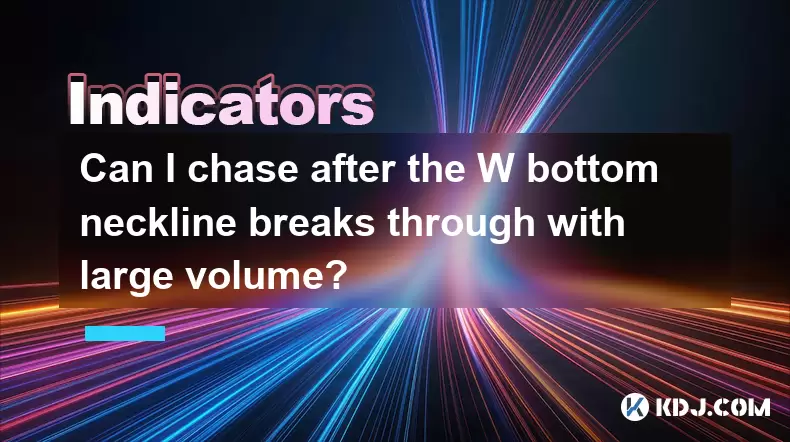
Can I chase after the W bottom neckline breaks through with large volume?
Jun 28,2025 at 07:28am
Understanding the W Bottom Pattern in Cryptocurrency TradingThe W bottom pattern is a common technical analysis formation used by traders to identify potential bullish reversals. In cryptocurrency markets, this pattern typically appears after a downtrend and signals that the selling pressure may be diminishing. The structure of the W bottom includes two...
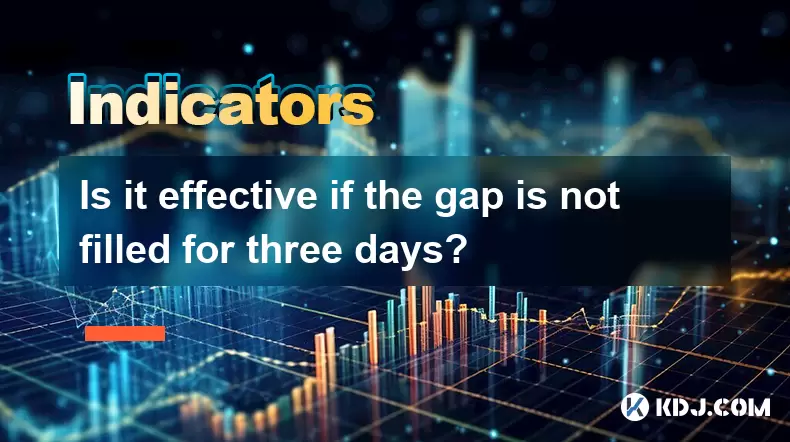
Is it effective if the gap is not filled for three days?
Jun 28,2025 at 01:00pm
Understanding Gaps in Cryptocurrency MarketsIn the context of cryptocurrency trading, a gap refers to a situation where the price of an asset opens significantly higher or lower than its previous closing price, with no trading activity occurring in between. These gaps are commonly observed during periods of high volatility, especially when major news ev...

Should I go if the average price line of the time-sharing chart suppresses the rebound?
Jun 28,2025 at 05:14pm
Understanding the Time-Sharing Chart and Average Price LineThe time-sharing chart is a real-time chart used in cryptocurrency trading to visualize price movements over short intervals, typically within a single trading day. It provides traders with insights into intraday volatility and momentum. The average price line, often calculated as a moving avera...

Can I add positions after the EXPMA golden cross steps back on the yellow line?
Jun 28,2025 at 11:57am
Understanding the EXPMA Indicator and Its RelevanceThe EXPMA (Exponential Moving Average) is a technical analysis tool used by traders to identify trends and potential entry or exit points in financial markets, including cryptocurrency trading. Unlike simple moving averages, EXPMA gives more weight to recent price data, making it more responsive to new ...

How to operate the next day after the daily limit is released with huge volume?
Jun 28,2025 at 12:35pm
Understanding the Daily Limit and Its ReleaseIn cryptocurrency trading, daily limits are often set by exchanges to manage volatility or during periods of high market activity. These limits can restrict how much an asset's price can fluctuate within a 24-hour period. When the daily limit is released, it typically means that the price cap has been lifted,...

Is it necessary to stop loss when the lower track of the rising channel falls below?
Jun 28,2025 at 05:29pm
Understanding the Rising Channel PatternThe rising channel pattern is a popular technical analysis tool used by traders to identify potential upward trends in asset prices. It consists of two parallel lines: an upper resistance line and a lower support line, both sloping upwards. The price action typically oscillates between these boundaries, offering o...

Can I chase after the W bottom neckline breaks through with large volume?
Jun 28,2025 at 07:28am
Understanding the W Bottom Pattern in Cryptocurrency TradingThe W bottom pattern is a common technical analysis formation used by traders to identify potential bullish reversals. In cryptocurrency markets, this pattern typically appears after a downtrend and signals that the selling pressure may be diminishing. The structure of the W bottom includes two...

Is it effective if the gap is not filled for three days?
Jun 28,2025 at 01:00pm
Understanding Gaps in Cryptocurrency MarketsIn the context of cryptocurrency trading, a gap refers to a situation where the price of an asset opens significantly higher or lower than its previous closing price, with no trading activity occurring in between. These gaps are commonly observed during periods of high volatility, especially when major news ev...
See all articles
























































































